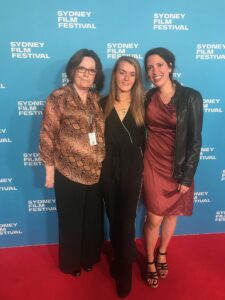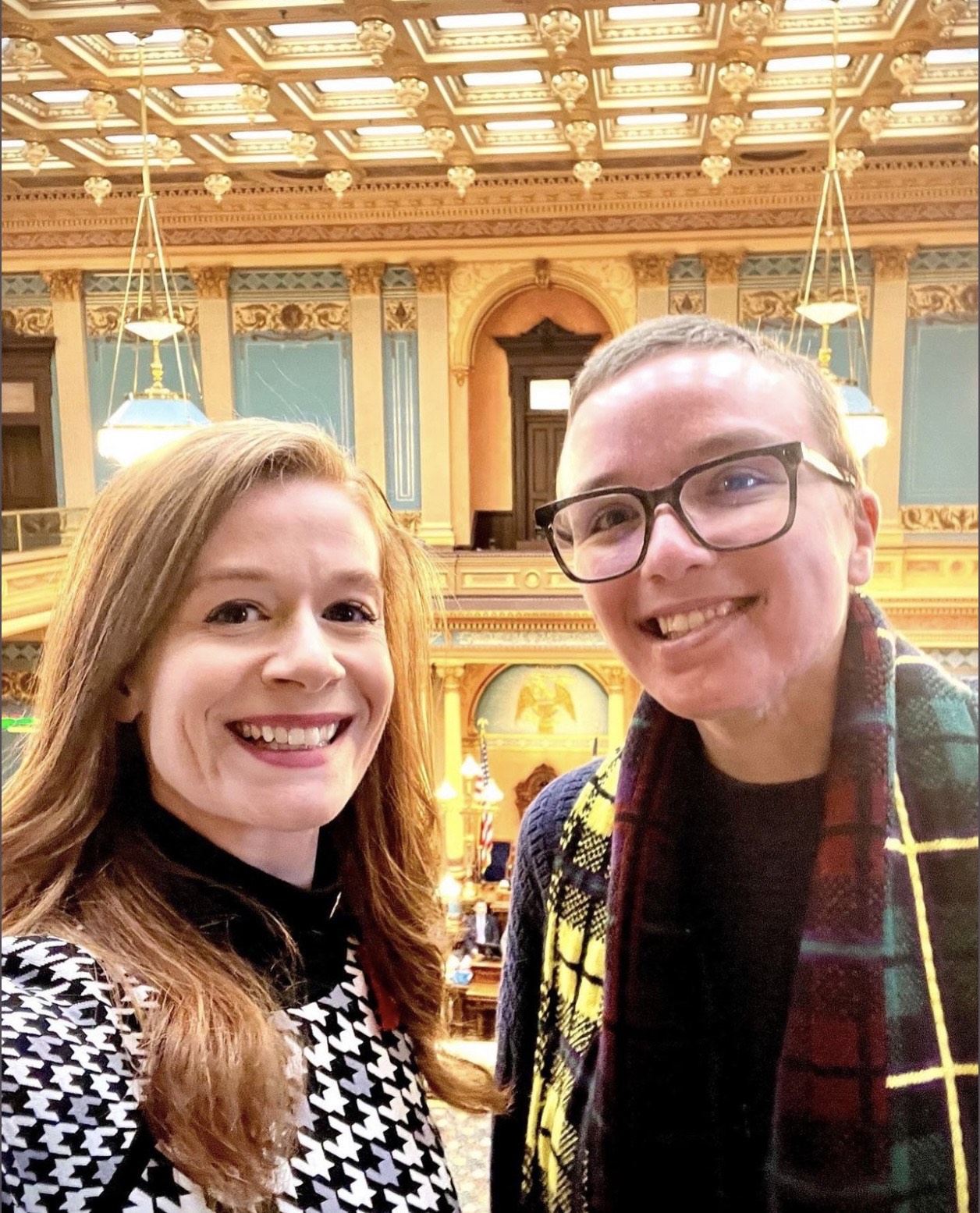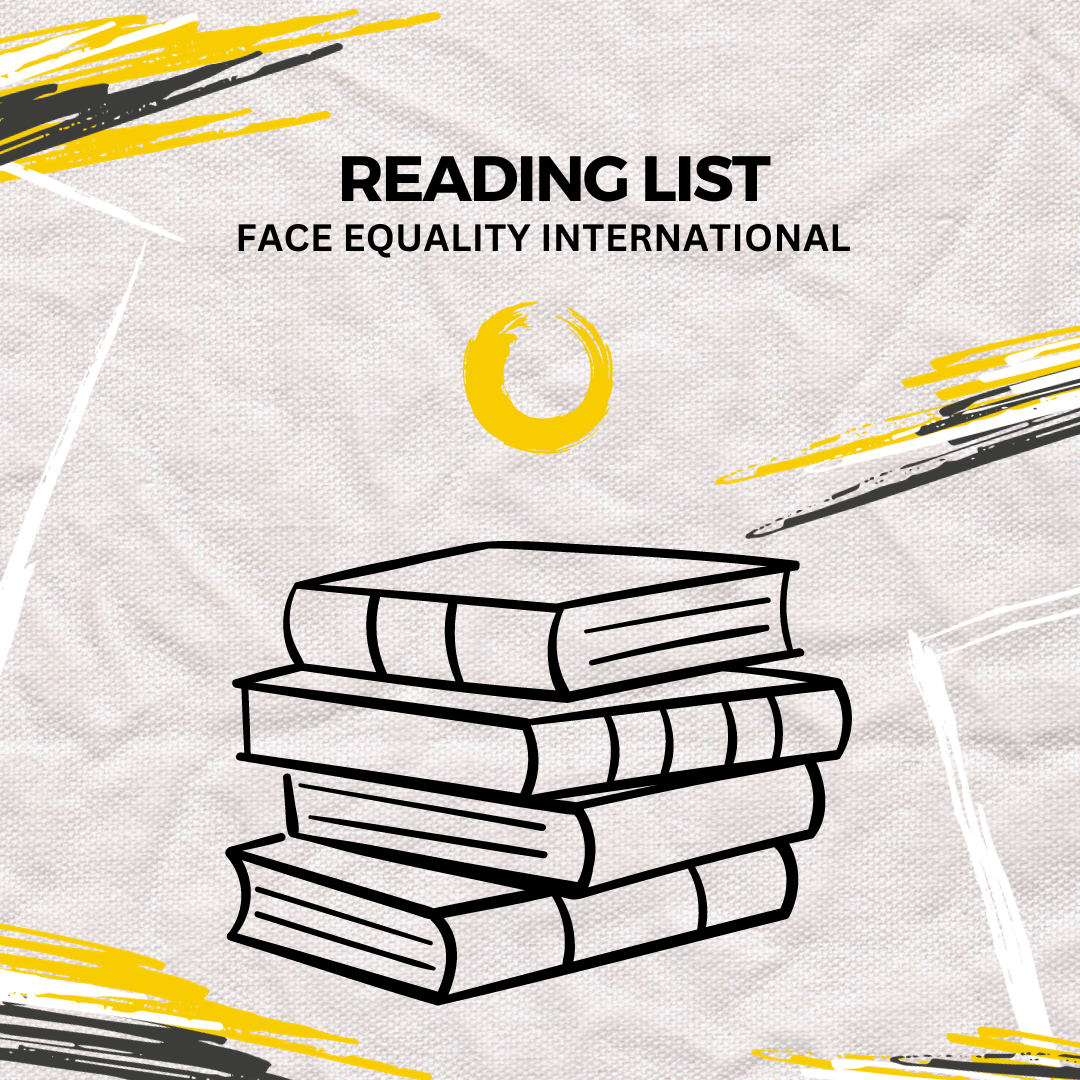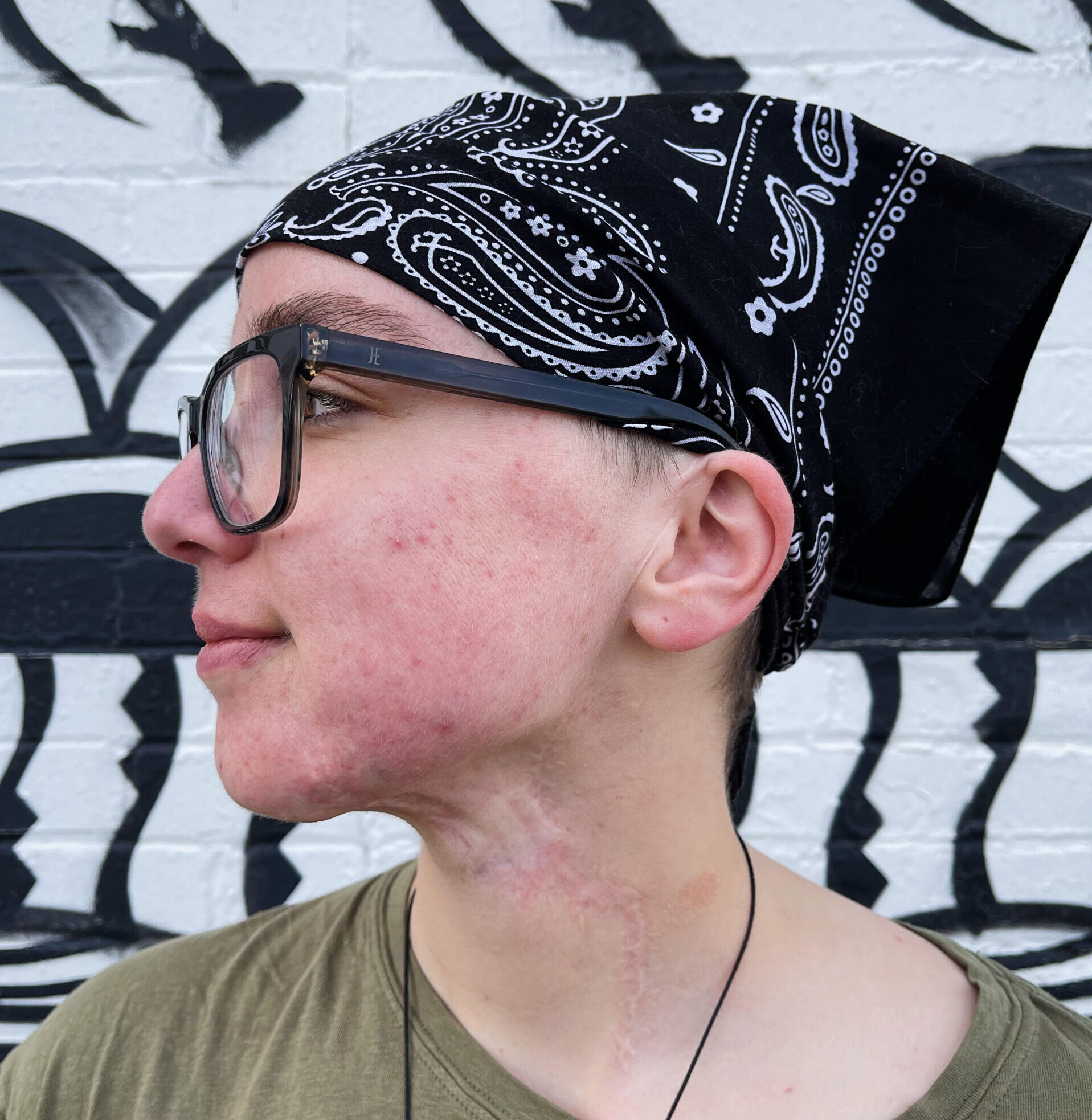Dirty God – the story of an acid survivor from the UK, starring burns survivor, Vicky Knight.
Ryan Foan, Facing Advocacy Blogger.
It’s a strange novelty to have so many positive things to say about a film that is centred around disfigurement. Historically, cinema’s treatment of this issue is shamelessly unsophisticated, often reducing people with variant faces and marginalised bodies into crass caricatures of villainy and tragedy. However, Dirty God is a complete breath of fresh air.
I thought the film was fantastic! Great storytelling and highly emotive whilst being undramatic. It contained none of the usual mawkish affirmations or melodrama we’ve come to expect from stories exploring this subject matter. It has a nuanced understanding of the lived experience of disfigurement that is head and shoulders above any film I’ve seen.
Vicky Knight’s performance as Jade is wonderful. Her portrayal of disfigurement feels incredibly authentic. It shapes the story in believable ways and the results are groundbreaking. I love that we got to see her character be so many things: a mother, a best friend, be funny, flawed, and have sexuality (something which is rarely covered when writing about disfigured lives). We also get a glimpse into how disfigurement discrimination intersects with misogyny when an online interaction is turned into vile ‘slut-shaming’. Traditionally disfigurement is used to signify villainy or heroic tragedy. But in Dirty God, Jade is neither demonised or lionised: she is human.
The decision to cast a burns survivor in this role is incredibly powerful. In an industry where disfigurement marginalisation is commonplace, casting an actor with burns to play a character with burns feels oddly radical. A non-disfigured actor could have played this role, but this would have made the film’s themes of disfigurement related exclusion and marginalisation seem incredibly hollow.
I was particularly struck by the boldness of the opening title sequence. It begins with a collection of extreme close-ups on Jade’s skin. Her scars are beautifully lit and shot like an intricate landscape. This is something I had never seen before. It was incredibly moving to see a film allowing it’s audience the space to see a disfigurement and think of it as beautiful. In film, disfigurement is often deliberately withheld and then unveiled in a moment of melodrama, but here it is front and center, encouraging the audience to embrace and accept the reality of her body.
I felt that Jade’s frustrations over her unmanaged expectations of surgery were particularly well observed. Misunderstanding around what surgery can achieve is very common, even among individuals, like myself, who have spent a lifetime undergoing reconstructive procedures. People often think you can’t have the life you want while disfigured. This leaves many individuals to believe that surgery is their only hope of a ‘normal’ life.
Her keenness to rid herself of scars, in part, is due to the huge psychological limitations that are projected onto people who look different. This theme is explored again when we see Jade dancing outside her flat while hidden beneath a face veil. In this moment, she is truly able to let go, but only when her scars are hidden. This otherwise vibrant and playful sequence subtly demonstrates the life-limiting shame that can inhibit so many who are affected by disfigurement. A terrible gulf can exist between who a person truly is and who they feel they’re ’allowed’ to be as a visibly disfigured person. This stifled potential is heartbreaking, but life with disfigurement doesn’t have to be this way, and it’s not long before she realises this. We see Jade wrestle with and confront the issue of internalised shame and, thankfully, the film never goes down the path of her character being ‘fixed’ by surgery.
Even though my personal experience of disfigurement is different from that of a burns survivor, I found much to relate to in this film and I am very grateful that it was made. As someone with a facial disfigurement, there is often a sense that our stories don’t belong to us, and that our faces and bodies only exist as tropes in movies to elicit fear or pity. But casting a performer like Vicky in a film that possesses such an authentic understanding of the lived experience of disfigurement is a bold step in the right direction.

Elizabeth Robinson, Facial Paralysis Advocate, Australia.
Dirty God , is the latest film of director, and co-writer, Sacha Polak from the Netherlands. Set in East London, it follows the journey of the recovery of Jade (played by newcomer Vicky Knight), a young single mum who has been left with severe body and facial scarring after a vicious acid attack by her ex-boyfriend. Jade struggles to come to terms with her new life and the harsh reality that there will be no more plastic surgeries done under the NHS. Her already fractious relationship with her mother is tested and Jade finds it hard to foster a relationship with her young daughter, feeling that she now sees her as a ‘monster’. Friendships are questioned and strained, and Jade starts spiraling down a self-destructive path, craving physical connection and passion and finding short-lived solace in online liaisons. She is bullied and harassed at her new job, all the while searching online to find that magic surgery that will ‘fix’ her face. Whilst at times there is the fear that Jade may give up on life, she has an enlightening moment (my favourite scene in the film) and finds her path back to herself and her daughter. Her face may have been partially destroyed by acid, but she will not let her attacker win and have her life destroyed.
As a subscriber of thirty years to the Sydney Festival, I was excited yet nervous about seeing this Australian premiere of Dirty God. As someone with an acquired facial difference (a severe case of shingles in 2015 left me with permanent facial paralysis on one side of my face and the inability to smile and close my eye properly) my mind was filled with questions. Would the film accurately portray what it’s like to have your whole world changed overnight? Would someone who doesn’t have facial scars really be able to understand and be able to portray the character authentically? Would the film trigger my PTSD? Would it be depressing? Even worse, would it be a film of self-pity – evoking sympathy rather than empathy and not showing what strong warriors those with facial differences are as we face the world every day – our faces changed forever?
All those concerns dissipated as soon as I stepped into the foyer and saw Vicky and Sacha on the red carpet. Our eyes met and I knew in that instant moment it was going to be a great film. I had the privilege of speaking to both Vicky and Sacha before the film and to my surprise and pleasure, both Sacha and Vicky agreed to meet me on the weekend after the film screening to discuss the inspiration behind Dirty God and to talk about the main character Jade and how Vicky felt about playing the role. Below are some of the questions and answers discussed over coffee before the second screening of the film.

I asked Sacha about her inspiration for the film and how she researched to develop the character of Jade. Sacha said she was at a music festival in Amsterdam and saw a young woman who was severely scarred. She looked at her and looked away and noticed that other people around her were doing the same thing. It made an impact on Sacha, realising that this young woman goes through this every day, going out being stared at and essentially never being able hide from her face, not be stared at or take a holiday from her face. (Interestingly, that observation struck a chord in me, as I too, often find myself saying I just want a holiday from my twisted face and the chronic pain I find myself in!) Sacha went on to say that when she was in London, she found out about acid attacks – something she was previously unaware of and decided to research more about this topic. According to Acid Survivors Trust International (ASTI). The UK has one of the highest rates of acid attacks per capita in the world. In 2016, London Metropolitan Police recorded 454 attacks involving corrosive fluids, and this statistic continued to rise in subsequent years.
To develop the character of Jade, both Sacha and her co-writer, interviewed survivors of acid attacks from the Katie Piper Foundation, doctors and surgeons from burns units in various hospitals as well as reading many stories. Vicky, a nurse working in the burns unit in Essex that treated her as a child, was offered the part of Jade after making a video about her burns for social media. It went viral and a few years later she was contacted by a casting director. She was reluctant to accept the part after her distressing experience with the BBC series ‘Too Ugly for Love’. She told the casting director she would only be good for horror movies, a reaction resulting from having been bullied while growing up and being called Freddie Kruger amongst other horrible names. To put it into context, Vicky herself is a survivor of an arson attack when she was just 8 years old and was left with burn scars to over a third of her body – but not her face. It took three hours to apply the prosthetics to her face which meant she started work at 3 am each morning, which is a big demand even for professional actors, let alone newcomers. This speaks volumes as to how seriously and professionally she took her role.
I asked Vicky if she felt the experience of having facial scars differed in how her self-esteem has been affected by having bodily scars. She said at first it didn’t feel different and she related very much to the character of Jade. However, as filming progressed it made her think differently.
“I can hide my scars, but I can now imagine how difficult it would be going out every day knowing you can’t hide your face and being stared at”
Vicky said the film has completely changed her life, helping her come to terms with her scars.
“I got bullied a lot when I was in school, I got beat up. Even now I still get people calling me names and that’s 16 years on. “It got to the point in my life a few years ago where I practically gave up. I didn’t want to live with my scars anymore.”
At first, she didn’t understand why the producers wanted to film so many close-up shots of her scars. But she said when she saw those shots on the big screen, everything changed.
“I was like, ‘Wow, this looks like a bit of art’. This is my own artwork. I love my scars now, I’m proud of them. It’s me – it’s part of me.”
“I want people to look at me and think I’m a role model to look up to.”
“The film’s given me such a positive outlook on life. If someone else has been through it or hasn’t been through it, I hope they can take a little bit of hope and self-love away from it. It’s such a great feeling to say that I’m accepting my scars. They’re me now. If you don’t like it, don’t look at them.”
As a Facial Paralysis Advocate and a burgeoning Facial Differences Advocate in Australia, I can honestly say that this is a ‘must see’ film for anyone with an acquired facial difference, not just facial burns. It’s a film that resonated deeply with me, at times even too closely. It’s a film to see with family and friends who have supported you on your journey. At times during the film my sister, who has been my greatest support and ally, would reach across and gently touch my leg reassuringly. I live the journey and she watches from the sideline, often helpless as I question my purpose in life. But this is not a depressing film. It is a film of many subtle layers, filled with hope and positive messages. Acquiring a facial difference does not destroy us. It makes us stronger as we not only face the world in a different way, metaphorically and literally, but we see relationships, family and friendships in a new light. Love conquers all and true beauty comes from within. The message I came away with? Within all of us is the power to rise above any situation or struggle, and transform into a brighter, stronger version of ourselves ever.
Thank you to Sacha Polak for making this film – Dirty God, and to Vicky Knight for your amazing performance in an extremely challenging and confronting role. Seeing the film has changed my life and attitude for the better. Let it change yours.
When asked what face equality meant to me, I found that this seemingly simple question has many answers on a physical, social and psychological level. For me, at this point in my journey, learning to accept and embrace my changed facial appearance this is what resonates the most. I want to see a world where people are accepted, valued and loved for who they are – not what they look like. That they are not judged or discriminated against based on their faces, but on who they are and are never made to feel uncomfortable and less of a person, based on a facial difference.
Posted by



